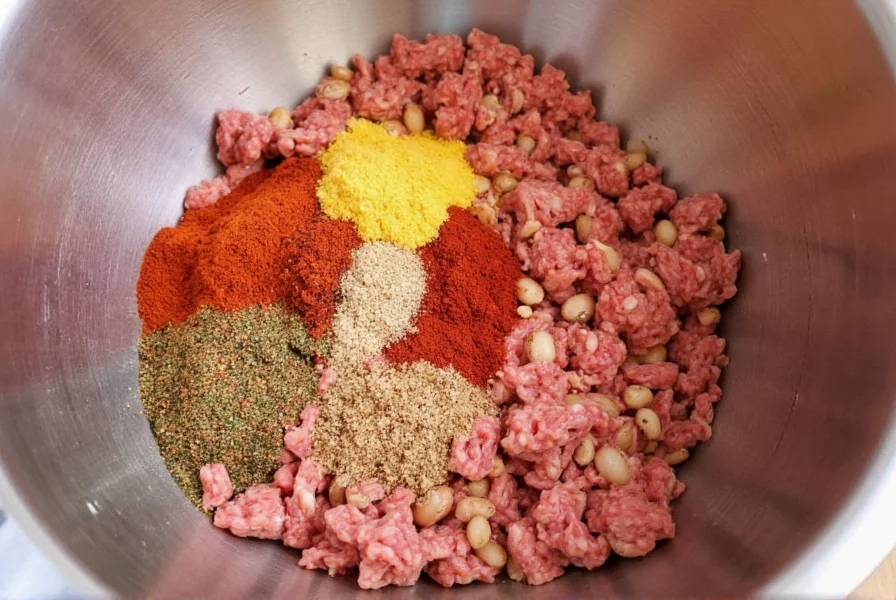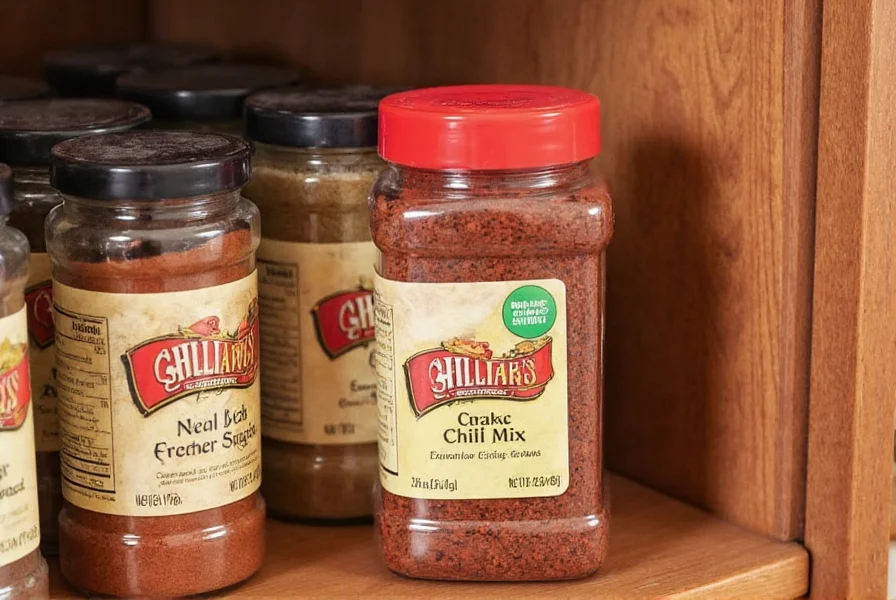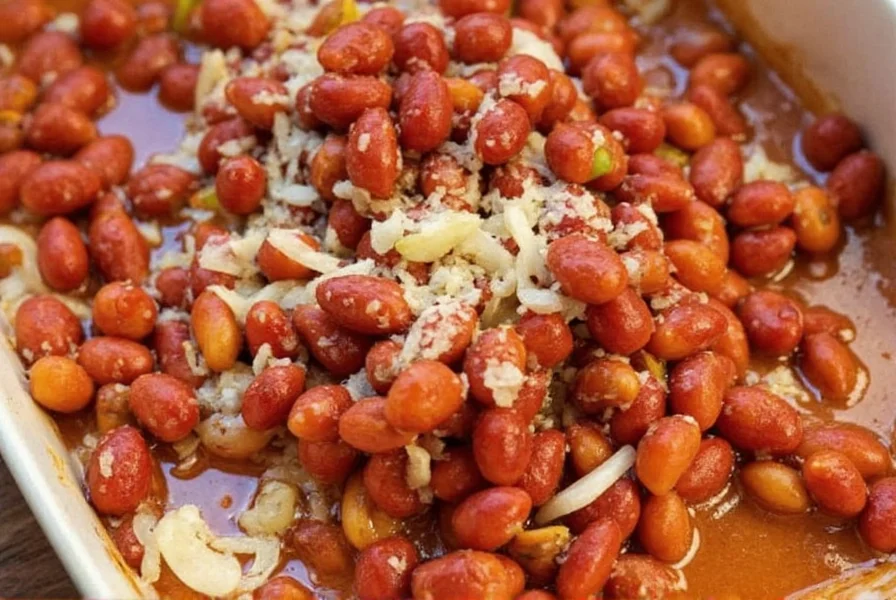When searching for information about Williams chili mix, many home cooks want to understand exactly what they're working with before purchasing or using this common pantry staple. This comprehensive guide provides factual information about the product's composition, proper usage techniques, and practical cooking applications based on verified culinary knowledge.
Understanding Williams Chili Mix Composition
Williams chili mix represents a category of dry seasoning blends designed specifically for chili preparation. Unlike canned chili or ready-to-eat chili sauces, this product functions as a flavor foundation that requires additional ingredients to create a complete dish.
| Component | Typical Ingredients | Purpose |
|---|---|---|
| Primary Seasonings | Chili powder, cumin, garlic powder, onion powder | Creates the foundational chili flavor profile |
| Thickening Agents | Cornstarch, wheat flour | Helps achieve proper chili consistency |
| Flavor Enhancers | Salt, sugar, citric acid | Balances heat and enhances overall flavor |
| Spice Elements | Cayenne pepper, paprika, oregano | Provides heat level and complexity |
Most commercial Williams chili mixes follow this general ingredient structure, though specific formulations may vary slightly between production batches and regional variations. The absence of liquid ingredients distinguishes these dry mixes from ready-made chili sauces.
Proper Preparation Techniques
Many home cooks encounter issues with Williams chili mix because they misunderstand its intended usage. Unlike complete chili products, this seasoning blend requires additional components to create a satisfying dish:
- Brown 1-2 pounds of ground beef or alternative protein
- Drain excess fat from cooked meat
- Add one package of Williams chili mix with 2-3 cups of liquid (water, broth, or tomato juice)
- Incorporate 1-2 cans of beans (kidney, pinto, or black beans)
- Simmer for 20-30 minutes to allow flavors to meld
The critical mistake many make is using the mix alone without sufficient additional ingredients. For optimal results when preparing Williams chili mix recipes, consider these professional cooking tips:
- Add a tablespoon of tomato paste during meat browning for deeper flavor
- Include one diced bell pepper and onion when cooking the meat for added texture
- Stir in a teaspoon of cocoa powder to enhance richness without sweetness
- Finish with fresh cilantro and a squeeze of lime juice before serving

Customization Options for Different Preferences
One advantage of using Williams chili seasoning rather than pre-made chili is the ability to customize the final product. Understanding how to adjust the base recipe allows cooks to accommodate various dietary needs and taste preferences.
For those seeking milder heat, reduce the mix quantity by one-third and add extra cumin and paprika to maintain flavor depth. Those preferring extra heat can incorporate a diced jalapeño with the meat or add a pinch of cayenne during simmering.
Vegetarian and vegan adaptations work exceptionally well with Williams chili mix. Simply substitute plant-based protein for the meat and use vegetable broth instead of water. The seasoning blend's composition remains effective regardless of the protein source.
Storage and Shelf Life Considerations
Dry chili mixes like Williams maintain quality for extended periods when stored properly. Unopened packages typically remain viable for 18-24 months past the production date when kept in a cool, dry pantry environment.
Once opened, transfer remaining seasoning to an airtight container to prevent moisture exposure and ingredient degradation. Properly stored, opened Williams chili mix retains optimal flavor for 6-12 months. Signs of deterioration include clumping, color changes, or diminished aroma when opened.

Comparing Williams Chili Mix to Alternatives
When evaluating different chili seasoning options, Williams stands out for its balanced flavor profile that doesn't overpower other ingredients. Unlike some brands that emphasize extreme heat or artificial flavors, Williams chili mix provides a traditional chili foundation that works well across various recipe applications.
Cooks seeking authentic regional variations might need to supplement Williams chili mix with additional ingredients. For Texas-style chili (which traditionally contains no beans), simply omit the beans and increase the meat quantity. For Cincinnati-style chili, additional cinnamon and cocoa would be necessary beyond the standard Williams mix preparation.
Frequently Asked Questions
Can Williams chili mix be used for dishes other than traditional chili?
Yes, Williams chili mix works well as a seasoning for soups, stews, taco meat, and even as a dry rub for roasted vegetables. Many cooks use it to add depth to bean dishes or as a flavor base for homemade sauces.
How much liquid should I add when preparing Williams chili mix?
The standard preparation calls for 2-3 cups of liquid per package of Williams chili mix. The exact amount depends on your preferred consistency—use less liquid for thicker chili or more for a soupier texture. Remember that beans will absorb additional liquid as the chili sits.
Does Williams chili mix contain gluten?
Some formulations of Williams chili mix contain wheat flour as a thickening agent, making them not gluten-free. Always check the specific product label for allergen information, as formulations can vary by production batch and regional distribution.
Can I make Williams chili mix from scratch at home?
Yes, you can create a homemade version by combining 2 tablespoons chili powder, 1 tablespoon cumin, 2 teaspoons garlic powder, 2 teaspoons onion powder, 1 teaspoon paprika, 1 teaspoon oregano, 1 teaspoon salt, and ½ teaspoon black pepper. This blend provides similar flavor characteristics to commercial Williams chili mix.
How can I enhance the flavor of chili made with Williams mix?
For richer flavor, brown the meat thoroughly before adding the mix, include fresh aromatics like onions and bell peppers, add a tablespoon of tomato paste during cooking, and let the chili simmer for at least 30 minutes. Finishing touches like fresh cilantro, lime juice, or a small amount of dark chocolate can elevate the final dish.











 浙公网安备
33010002000092号
浙公网安备
33010002000092号 浙B2-20120091-4
浙B2-20120091-4